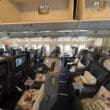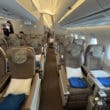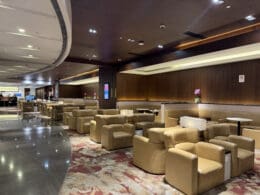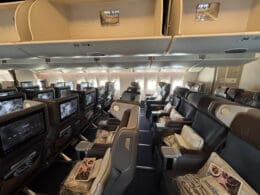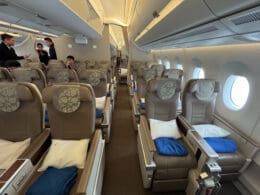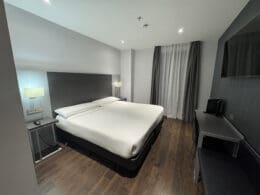This is largely intended to be a guiding post for those who are planning to travel on Cathay Pacific, and are curious to know what product they’ll be on, without a way to know how. Cathay Pacific doesn’t have a “hold” option, and this flexibility is something that many Hong Kong travelers need. So many choose to book through travel agents when traveling on Cathay Pacific, who have much higher speculative capabilities, as well as the time to keep an eye on cheaper prices (as you’re paying them an agent fee for it). However, booking with an agent means that you won’t know which product you’d be flying with some of the time, especially when flying regionally.
If you know how to check which product you’ll be flying on Cathay Pacific, by all means skip this post, as it won’t be helpful to you.
So say that you’re either picking your own flights on Cathay Pacific’s website and want to choose the best seat for yourself, or you’ve been given two flight numbers by your travel agent and want to know what seats you’ll be sitting in. How do you tell what seats will be offered on your aircraft? What if you aren’t familiar with using ExpertFlyer and just want to know quickly?
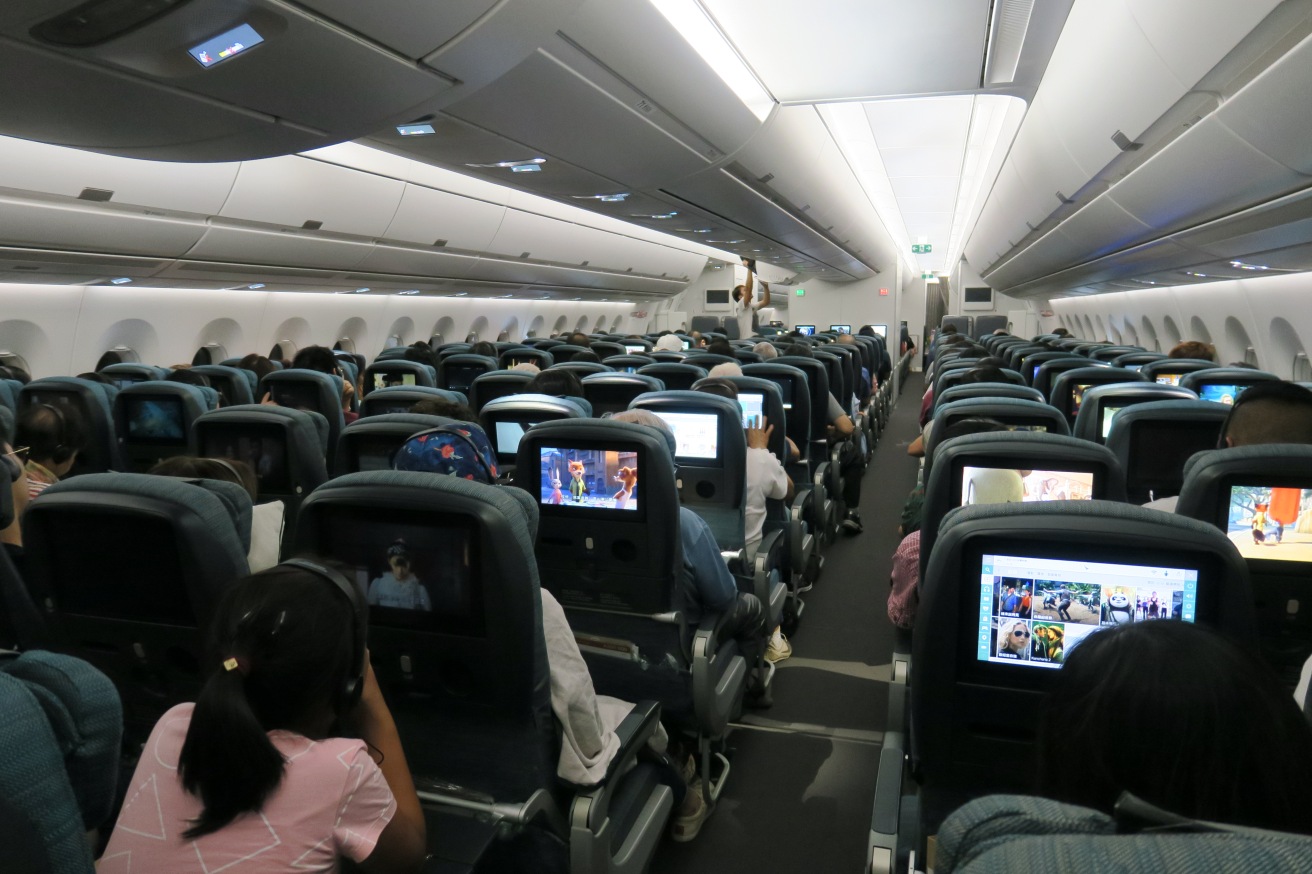
I thought I’d quickly compile a guide – remember that, especially on shorthaul flights, equipment swaps are always possible, so keep an eye out on the seatmap whenever you can.
How To Know Which Business Class Seat You Will Be Seated In
Cathay Pacific used to have a few business class products operating at the same time, though they’ve watered it down to three upon the retirement of their 747s, A340s, and their old regional product. Currently, Cathay Pacific operates their newer longhaul business class seat, their slightly older longhaul business class seat, and their regional business class seat.
So let’s say I want to book a flight to Singapore, and I’m trying to choose which plane I want to be on based on its configuration alone. I would go on Cathay Pacific’s website and make a dummy booking, searching flights from Hong Kong to Singapore. I’m first brought to a price page (unless I’m selecting to travel on fixed dates), then I’m brought to a flight selection page, where there is a plethora of flights I can choose from.
I would then go to my preferred flight based on my time schedule (or the flight number that the travel agent has given me), and I’d go to “View details”, where I can view the details that are associated with my flight.
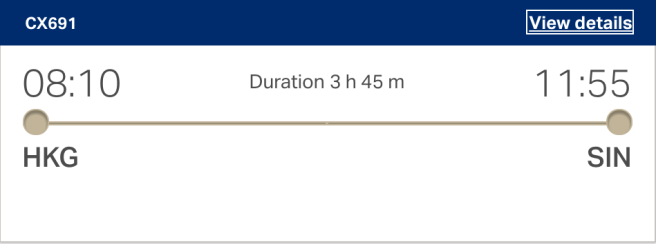
The “View details” page will display what equipment I’ll be flying on, so in most cases you’d be able to tell by this point.
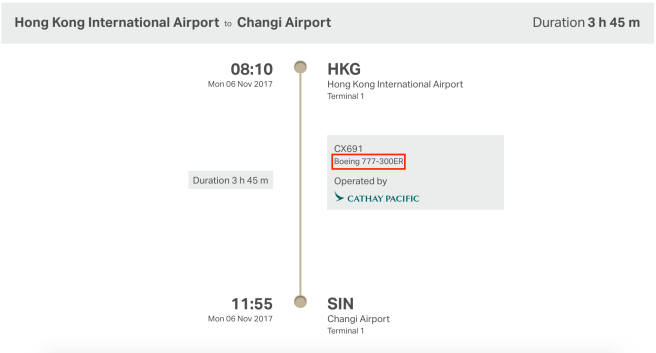
If the aircraft type says that the flight will be operated on an A350 (or an “Airbus Industrie A350-900”), the flight will feature Cathay Pacific’s newest business class seat.
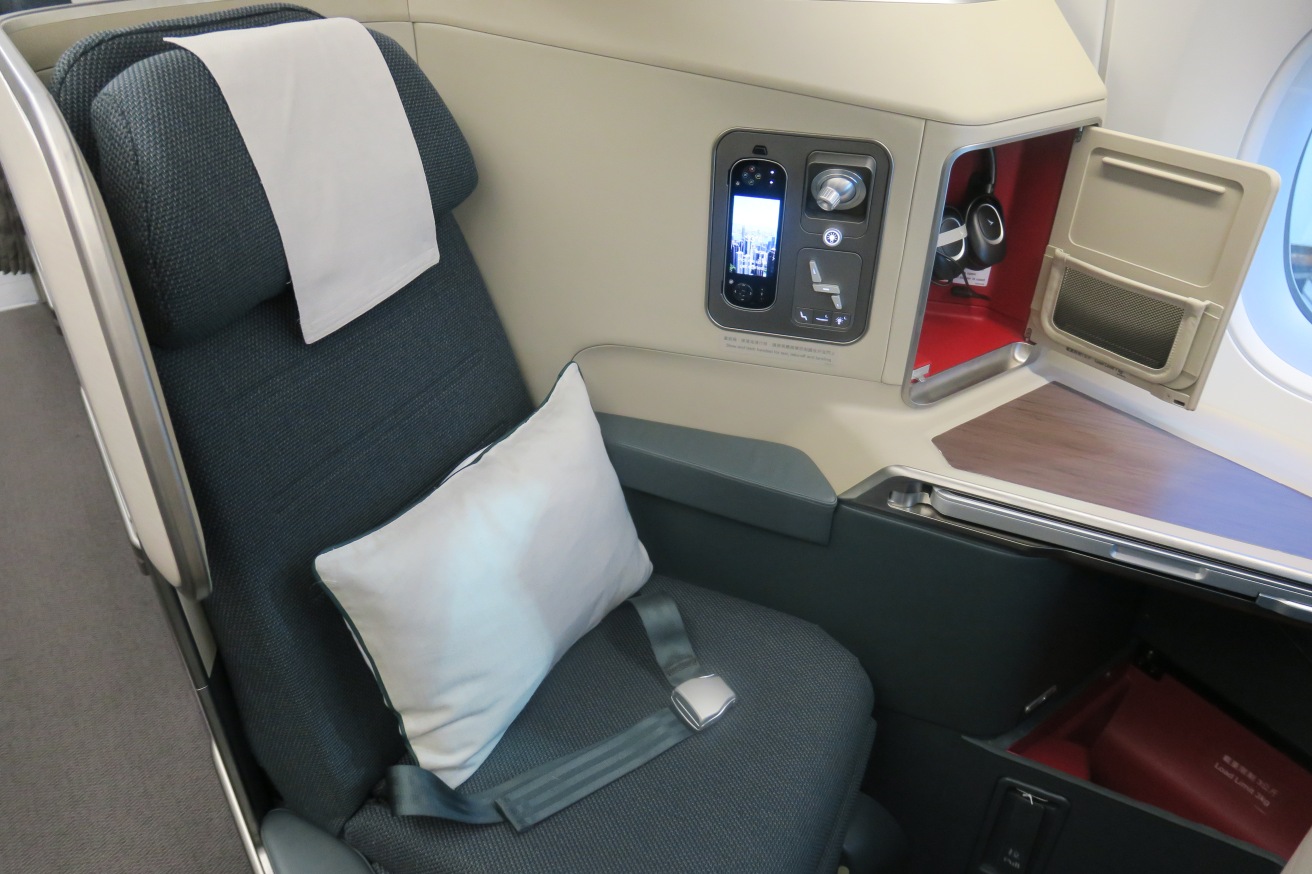 Cathay Pacific Airbus A350-900 Business Class Seat
Cathay Pacific Airbus A350-900 Business Class Seat
If the aircraft type says that the flight will be operated by a Boeing 777-300ER, the flight will feature the slightly older, but still extremely comfortable reverse herringbone seat.
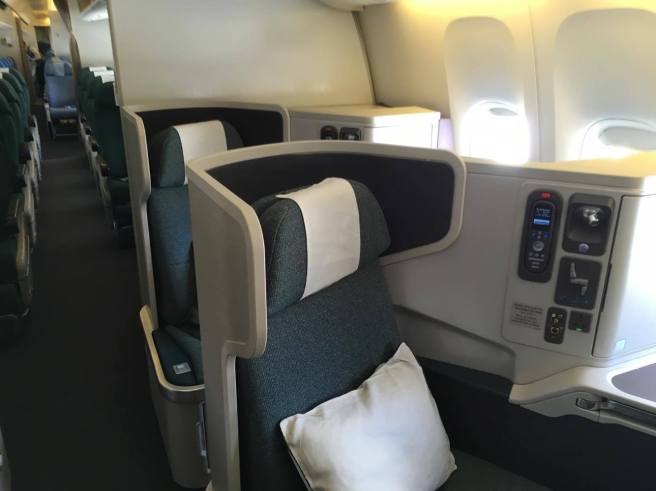 Cathay Pacific Boeing 777-300ER Business Class
Cathay Pacific Boeing 777-300ER Business Class
If the aircraft type suggests any other type of Boeing 777, such as a Boeing 777-200/200ER or a Boeing 777-300, you’re out of luck – you’ll be stuck in their regional product for the few hours of the flight. When you’re on a 6+ hour flight, however, you’re unlikely to be stuck on this configuration.
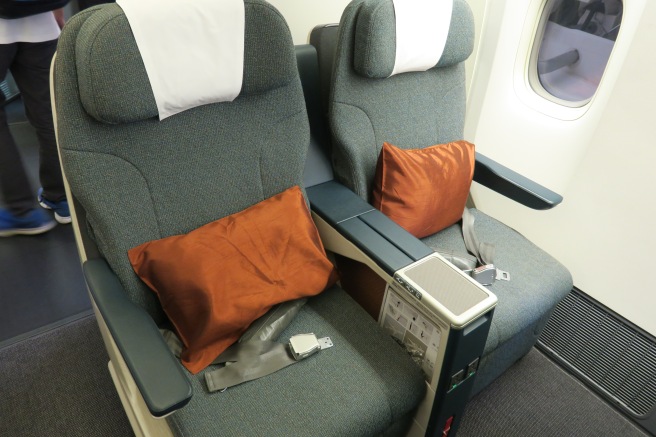 Cathay Pacific Boeing 777-200 Business Class
Cathay Pacific Boeing 777-200 Business Class
So 75% of the time, it’s pretty simple. However, the other (approximately) 25% of Cathay Pacific’s fleet are operated by A330s, so how do you tell which plane will operate your flight?
I’d then continue booking, keeping in mind that this is just a dummy booking. So you can give them whatever details you’d like, as long as you don’t give them a credit card.
I’d reach a “passenger details” page, where I can enter virtually anything I want, as I won’t be paying for this ticket.
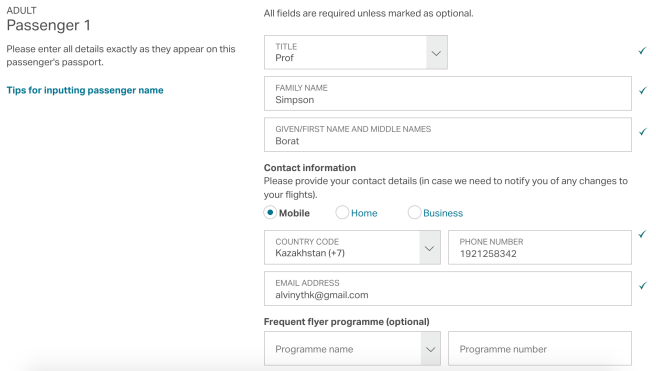
After that I’d be directed to a “seat selection” page, where I can click on the flight operated by an A330, and I’d be presented with one of two configurations:
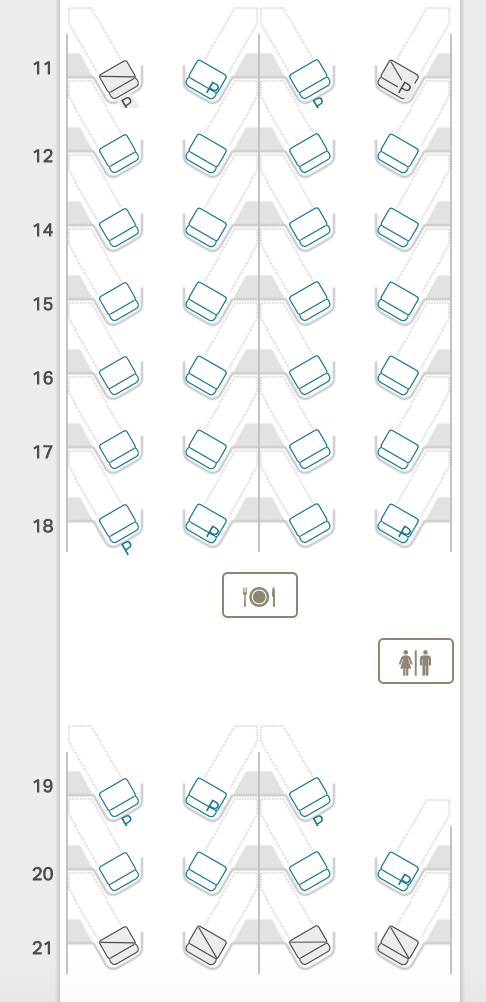
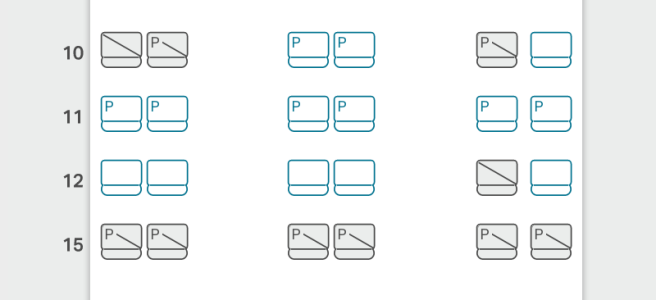
If your flight shows the 1-2-1 configuration as shown in the first picture above, you’ll be seated in Cathay Pacific’s longhaul A330 business class, which is similar to the business class seat you’ll find on the 777-300ER.
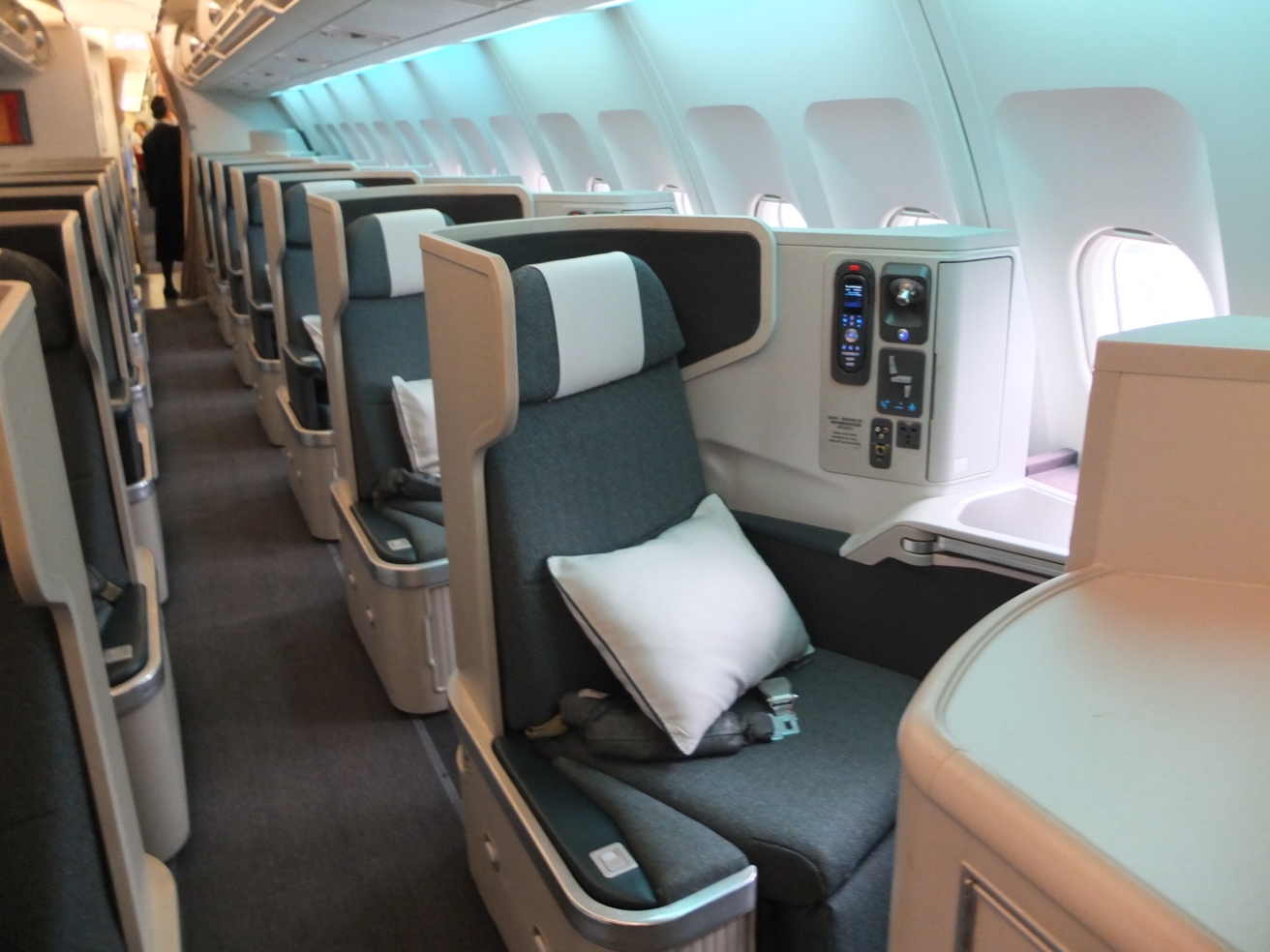 Cathay Pacific Airbus A330-300 Longhaul Business Class
Cathay Pacific Airbus A330-300 Longhaul Business Class
However, the other configuration will mean that you’re going to be in regional business class for your flight. If you’re on a Cathay Dragon plane, you need not check – this will definitely be the configuration you’ll be on.
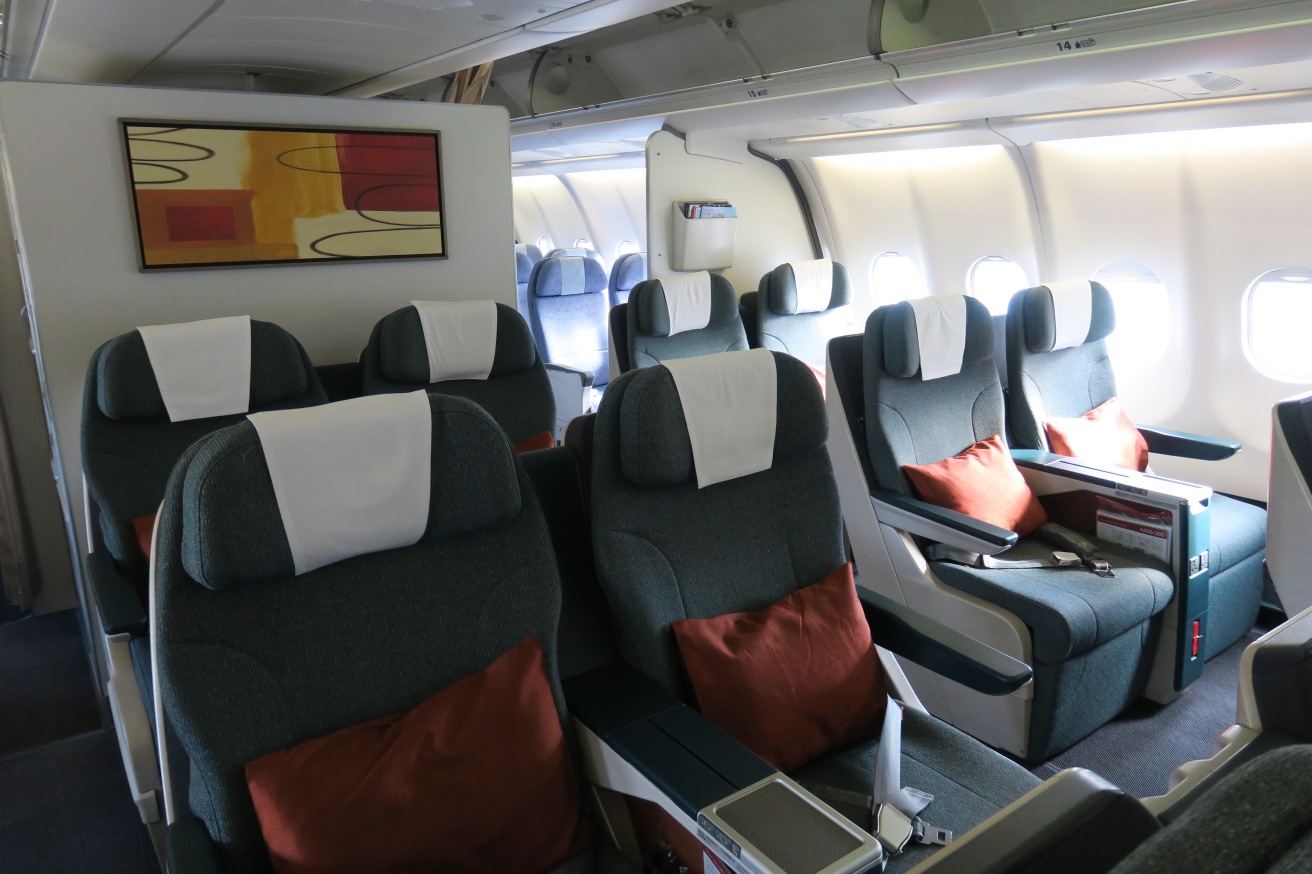 Cathay Pacific Airbus A330-300 Regional Business Class
Cathay Pacific Airbus A330-300 Regional Business Class
I don’t actually hate the regional seat as such, but rather the downgraded amenities that come with it. Fortunately, Cathay Pacific seems to be offering better pillows and headphones in regional business class that are more on par with their longhaul fleet (though I haven’t flown them in 2017, so I can’t confirm). Still, given the choice, I’d enjoy the extra privacy and space of one of their longhaul configurations.
There’s only one reason why I’d go out of my way to fly Cathay Pacific’s A350 over their 777-300ER or A330 – the A350 features WiFi, while the other two planes don’t (yet). On an hourlong flight to Taipei, I wouldn’t find the WiFi immensely valuable. However, I’d appreciate it on a longer flight to Singapore (or a true longhaul flight).
To sum it up, do as follows:
- Check if your flight is an A350, 777-300ER, or 777-200/200ER or 777-300
- If your flight is an A330, go further into the dummy booking and check the seatmap for your flight
How To Know Which Premium Economy Class Seat You Will Be Seated In
Premium economy is rather straightforward, as Cathay Pacific only introduced premium economy a few years ago. Still, there are two premium economy seats that you will potentially be on, and it does help to know which one you’d be seated in.
Similarly to how I would if I were seated in business class, I’d make a dummy booking for my flight, though I won’t even need to go as far in this time. Let’s say I want to go to Singapore in premium economy, as the prices can be on the cheaper end sometimes (we’re talking HK$3,900 fares, which are equivalent to some economy fares we see during peak season).
I’d then be brought back to the flight selection page, where I’d be able to press “View details” for each flight.
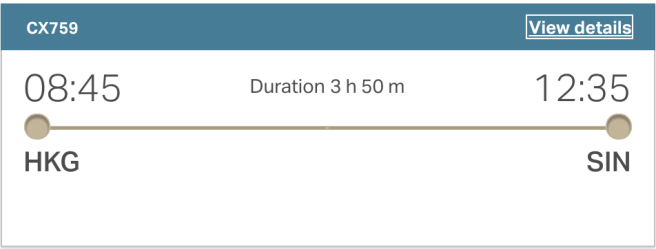
The “View details” page would once again show the equipment type that I’d be flying on.
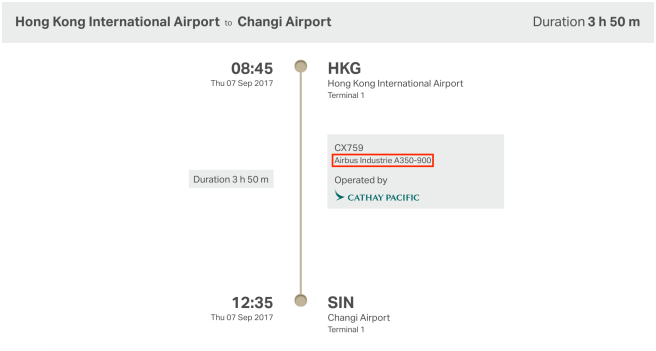
If the system displays an “Airbus Industrie A350-900”, you’ll be seated in Cathay Pacific’s A350 economy, which features a very sleek, comfortable seat with great recline and legrests at every seat.
 Cathay Pacific Airbus A350-900 Premium Economy
Cathay Pacific Airbus A350-900 Premium Economy
If the system displays anything else (such as a 777-300ER or an A330-300), you’ll be in Cathay Pacific’s original premium economy product, which is still very comfortable.
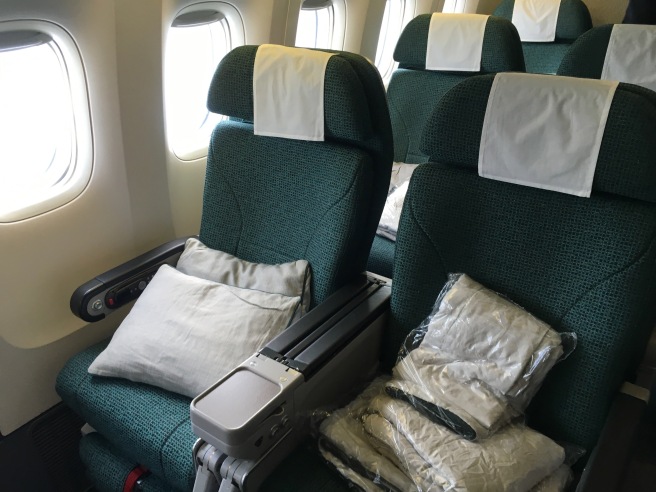 Cathay Pacific Boeing 777-300ER Premium Economy
Cathay Pacific Boeing 777-300ER Premium Economy
Overall, I think that any premium economy seat can possibly rival the regional business class seat outlined above – the regional business class seat is certainly slightly wider and goes down further, but the difference in overall comfort is marginal, especially considering that most premium shorthaul markets value the business class seat at almost fourfold.
How To Know Which Economy Seat You Will Be Seated In
I find Cathay Pacific’s international economy seats to be some of the most comfortable seats. The newest A350 seats are ergonomic, in the sense that they have “cradle” headrests where you’ll be able to sleep comfortably even in an aisle or middle seat. The old 777 and A330 seats, while not revolutionary, are probably the most well-padded seats that one can find in economy. Unfortunately their 777s are switching to a more cramped 3-4-3 configuration to keep their profit up with the industry standard (since they’re kind of bleeding money at this point), though that hasn’t happened as of today – hopefully the cradle headrest is introduced, so at least there’s some solace in comfort.
However, some aircraft feature their shell seat, which has to be one of the most uncomfortable economy seats that are still flying out there – while I’d be fine with them, many of my friends have reported broken power ports due to how old the seats are and because they don’t fly international routes anymore, so I’d go out of my way to avoid them in favour of the new seats.
I’d pull up a dummy booking the same way as I would above when flying in business class or premium economy, where I’d usually be able to tell which aircraft I’d be flying on.
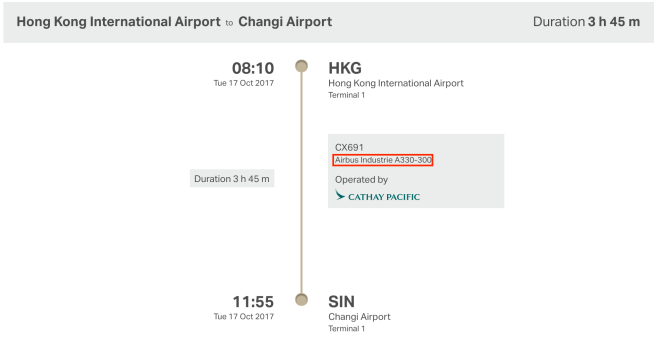
If the aircraft type says “Airbus Industrie A350-900”, you’d be flying in Cathay Pacific’s A350 economy seat, which features cradle headrests. Our team hasn’t tried out the seat yet, but I’ve heard that it’s really comfortable, so I’d be excited.
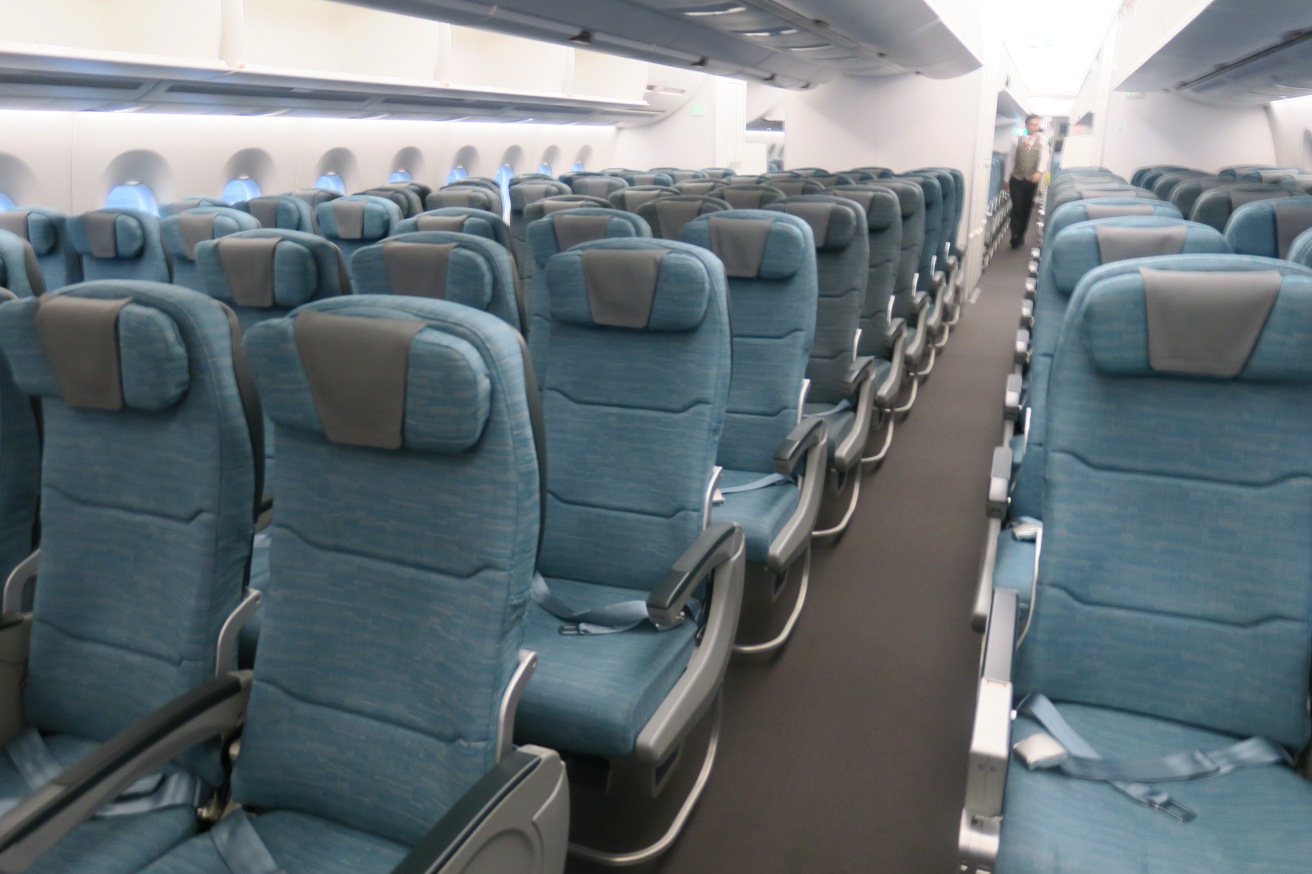 Cathay Pacific Airbus A350-900 Economy Class
Cathay Pacific Airbus A350-900 Economy Class
If the aircraft type says “Boeing 777-300ER” or “Boeing 777-200/200ER”, you’re definitely going to be flying in Cathay Pacific’s slightly older economy seat. The old economy seat is probably unarguably my favourite economy seat out there (since I haven’t tried the new seats yet).
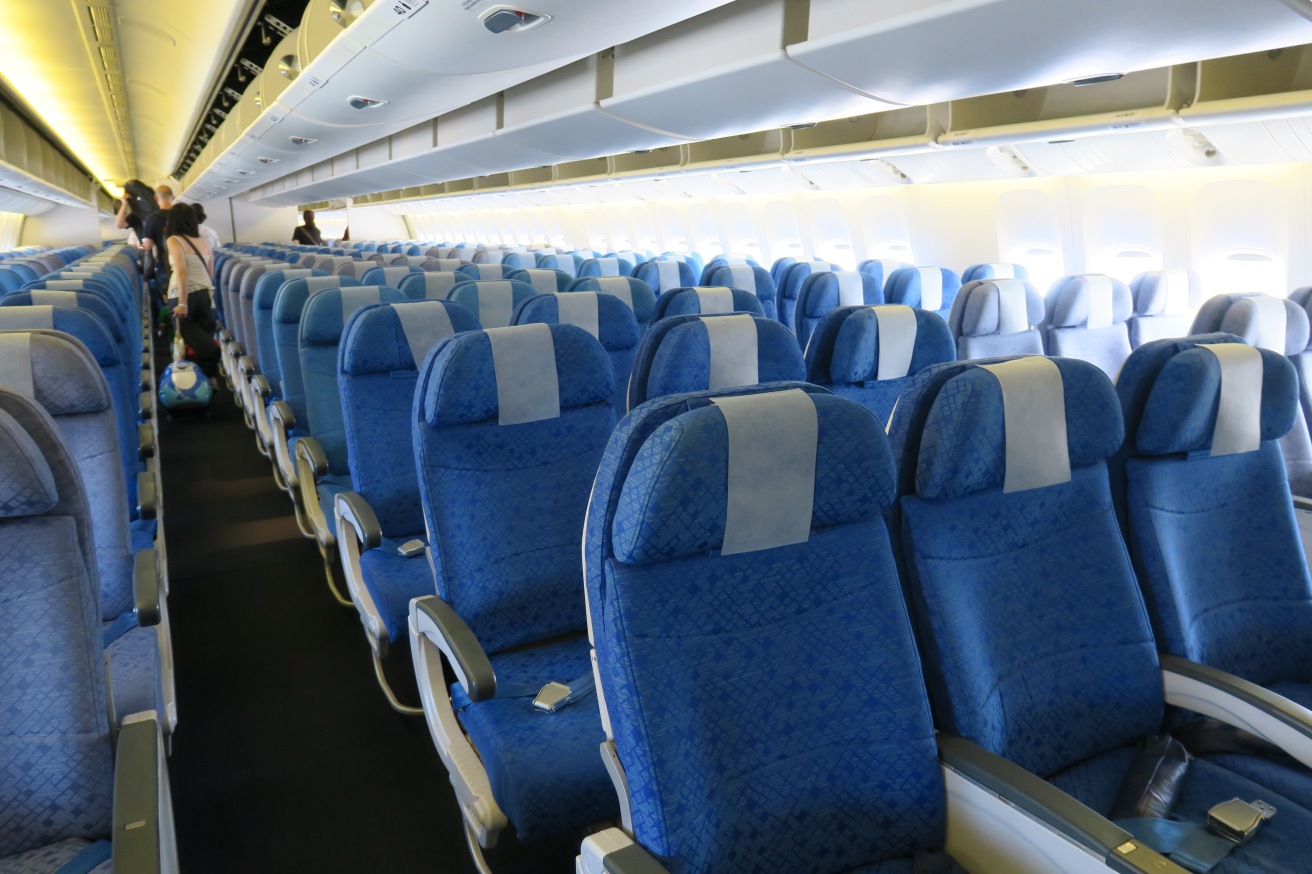 Cathay Pacific Boeing 777-200 Economy Class
Cathay Pacific Boeing 777-200 Economy Class
What if you’re flying on the 777-300? Unfortunately, this means that you should probably board early and ask for an extra pillow (and charge up, too), as you’d be flying in Cathay Pacific’s shell seat economy class, which is far from pleasant. Ultimately some of Cathay Pacific’s monopolies feature 777-300s, as they carry 398 people, the most of any Cathay Pacific aircraft, but yeah, these seats are far from ideal.
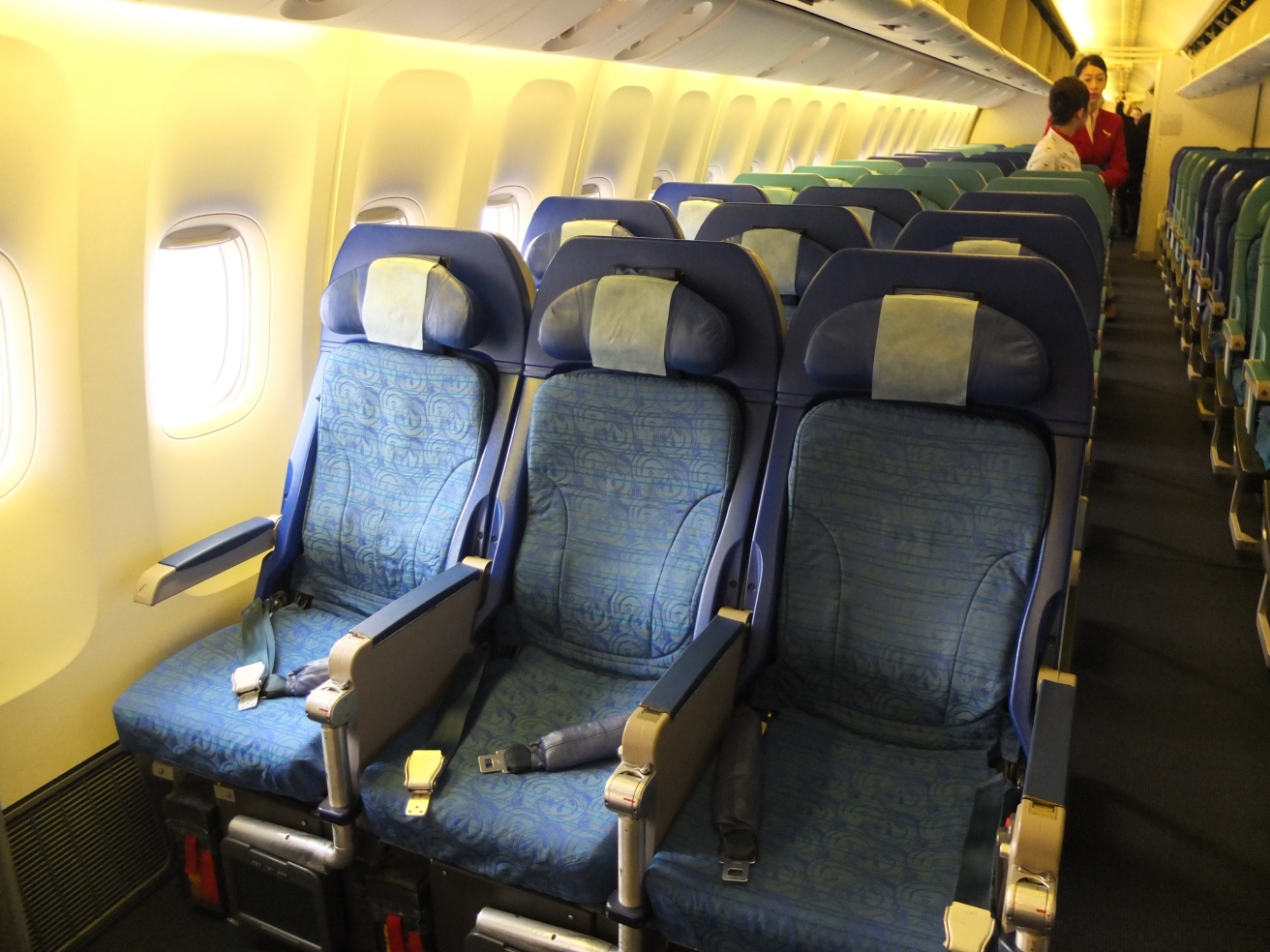 Cathay Pacific Boeing 777-300 Economy Class
Cathay Pacific Boeing 777-300 Economy Class
Once again, the A330 is the only plane left. But doesn’t the seatmap look the same no matter which aircraft you’re flying? Yes, it does. So there’s one solution – I would make a business class dummy booking to see which plane I’d be seated on.
I’d select my flights, fill in dummy details (remember, they don’t have to be your details, since you’re not actually making the booking), and get to seat selection, where I’d once again be greeted with one of two seatmaps:


If your seatmap shows a 1-2-1 configuration, you will be guaranteed a seat in Cathay Pacific’s new economy class seat.
 Cathay Pacific Airbus A330-300 Economy Class
Cathay Pacific Airbus A330-300 Economy Class
Now, if you come across a 2-2-2 configuration, the good news is that you will most likely still end up with the new economy class seat, since a large amount of Cathay Pacific planes have been refurbished.
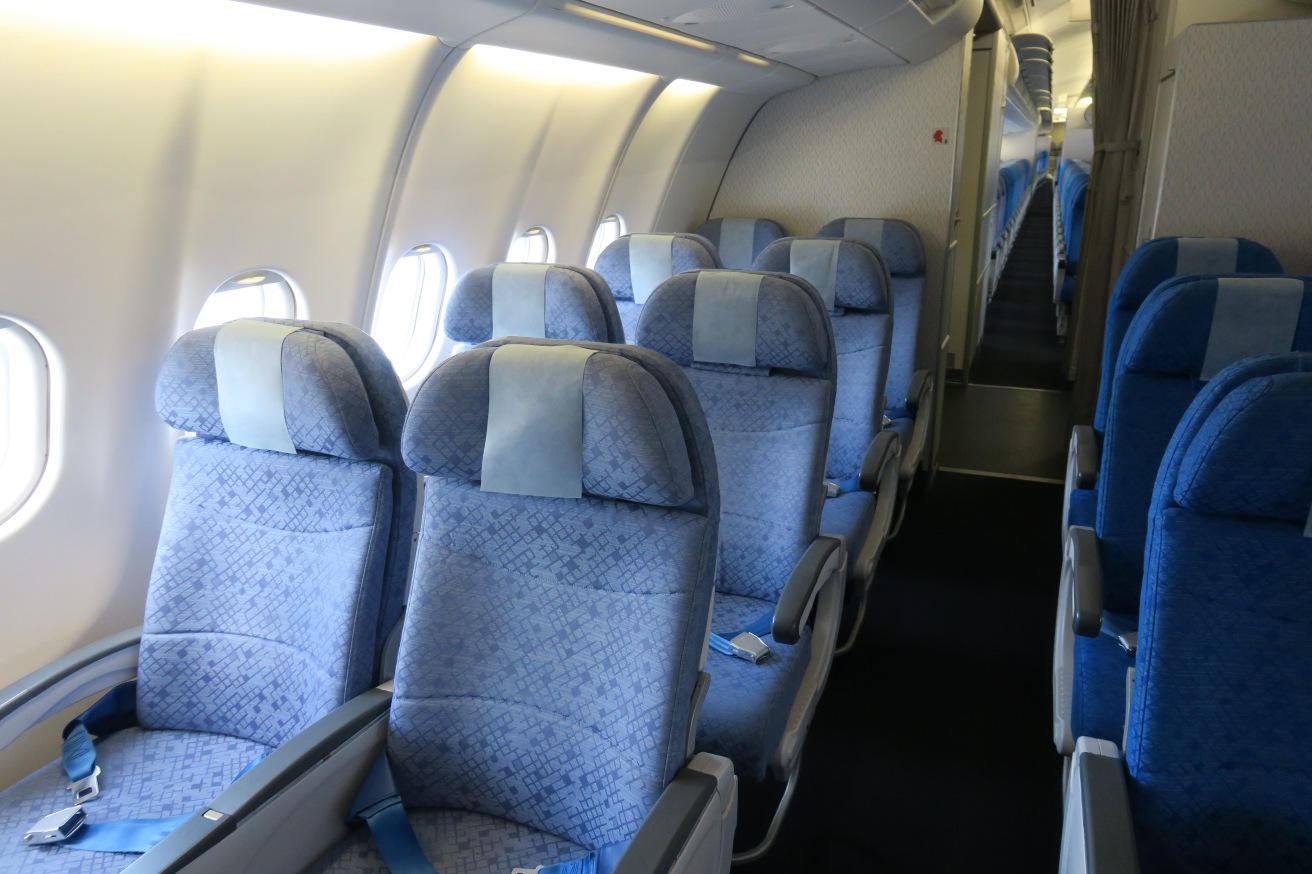 Cathay Pacific Airbus A330-300 Economy Class
Cathay Pacific Airbus A330-300 Economy Class
However, a small fraction of regional Cathay Pacific/Cathay Dragon A330s still feature the shell seats in economy class, which aren’t pleasant. So I’d be bummed if I ended up on one of the few aircraft that feature shell seats in economy, though they run short flights nowadays so it isn’t too big of a deal.
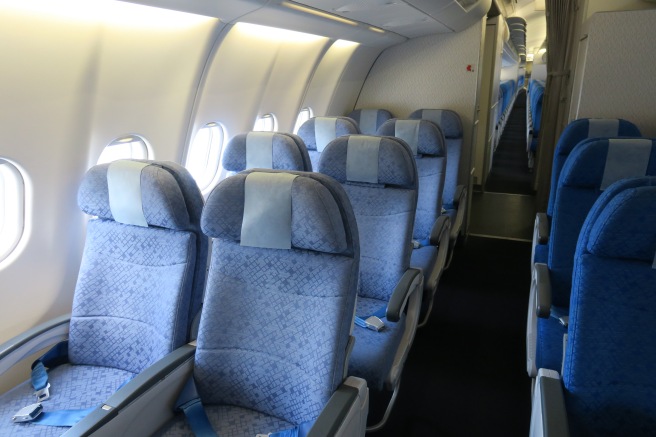 Cathay Dragon Airbus A330-300 Economy Class
Cathay Dragon Airbus A330-300 Economy Class
What About Cathay Dragon?
All Cathay Dragon business class seats are operated by the same regional business class seat you’d find on Cathay Pacific.
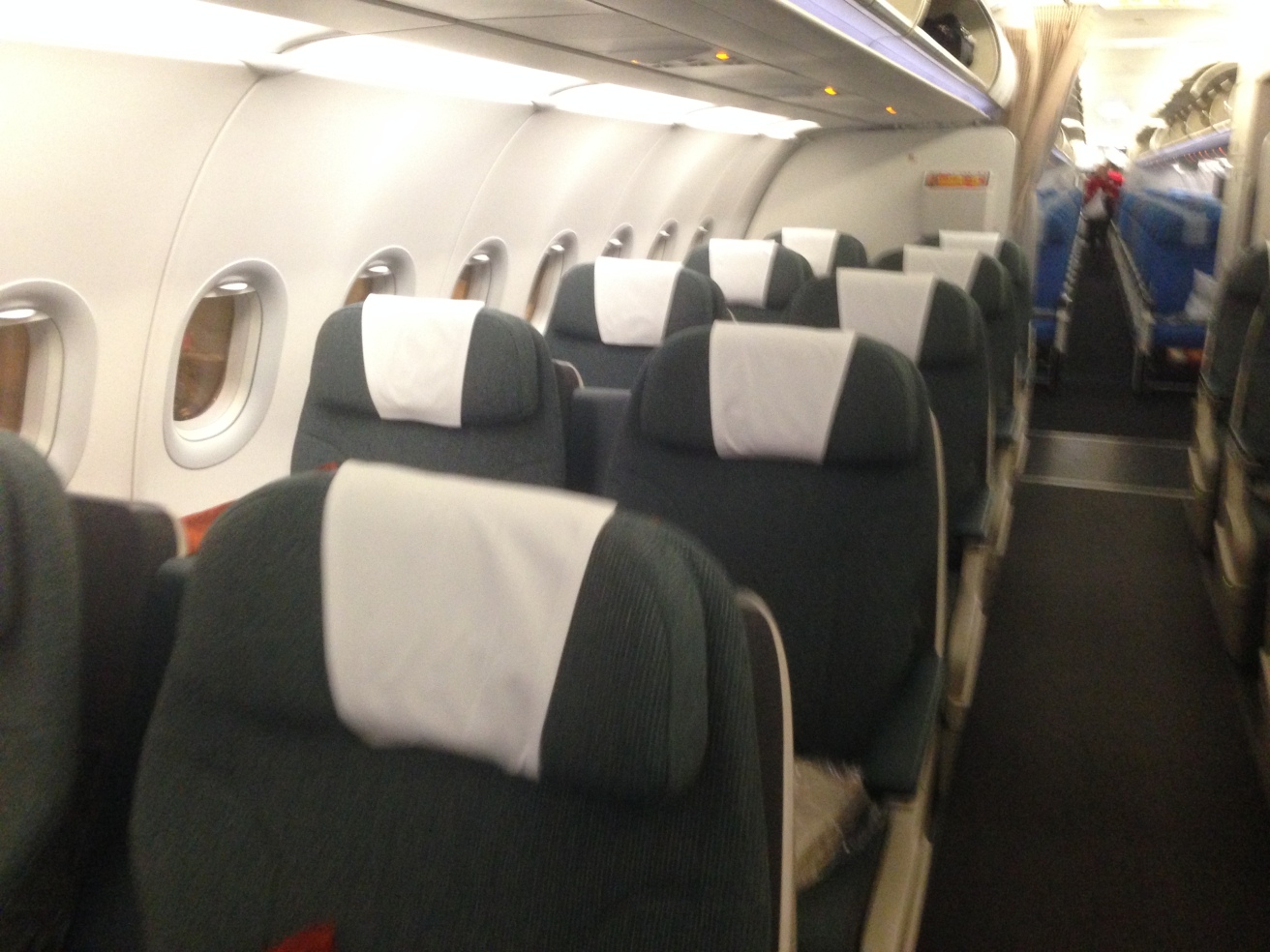 Cathay Dragon Airbus A321 Business Class
Cathay Dragon Airbus A321 Business Class
However, economy class may feature a different product. Make a dummy booking for your flight as you would above, and check the equipment your plane will be on.
All A330s and A321s will feature Cathay Dragon’s new economy class seat, which is the same as the seat that Cathay Pacific runs on international flights.
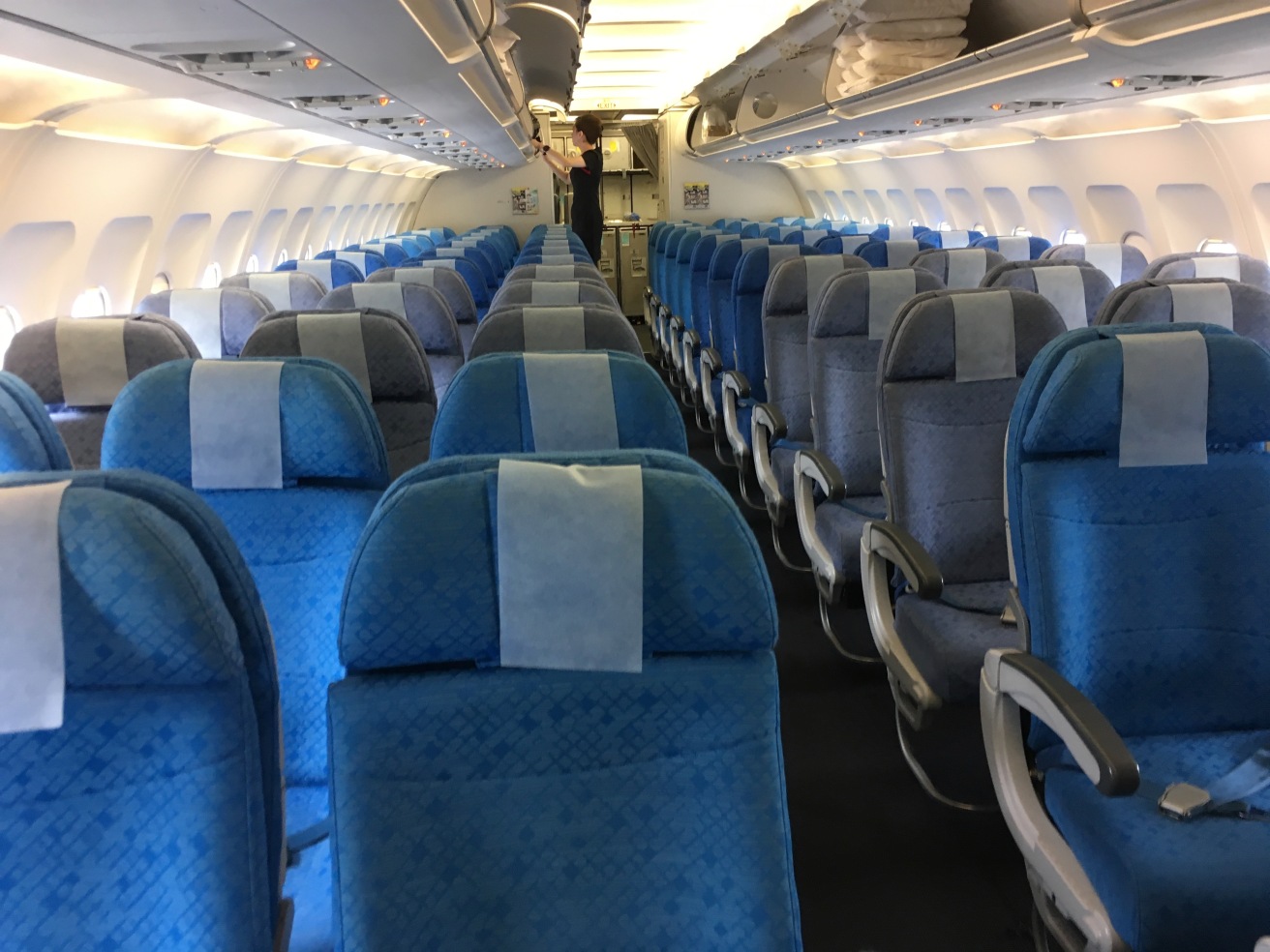 Cathay Dragon Airbus A321 Economy Class
Cathay Dragon Airbus A321 Economy Class
However, the A320s don’t feature personal TVs in economy class. The seats are still rather ergonomically designed, but I’d avoid the A320 if I could. Fortunately, the A320 is only run on rather short flights.
 Cathay Dragon Airbus A320 Economy Class
Cathay Dragon Airbus A320 Economy Class
Bottom Line
I’m a big advocate of airline transparency, in the sense that passengers should know what they’re getting before they board a flight. Cathay Pacific is one of the less transparent airlines when it comes to which configuration you’re getting, so this is the easiest way to navigate around that and know what you’re going to get onboard a flight, especially if you’re traveling longhaul. I’d say that Cathay Pacific offers a rather solid product across all cabin classes, so I wouldn’t hesitate to fly them – though if you’re presented with many flight choices, be able to choose the right one.
Once again, equipment swaps happen, but they’re less frequent on Cathay Pacific than on a few other airlines, so I’d just keep an eye out on the seatmap. I’d consider this a rather foolproof way to pick your flight, though remember that there’s never a 100% success rate in telling.


